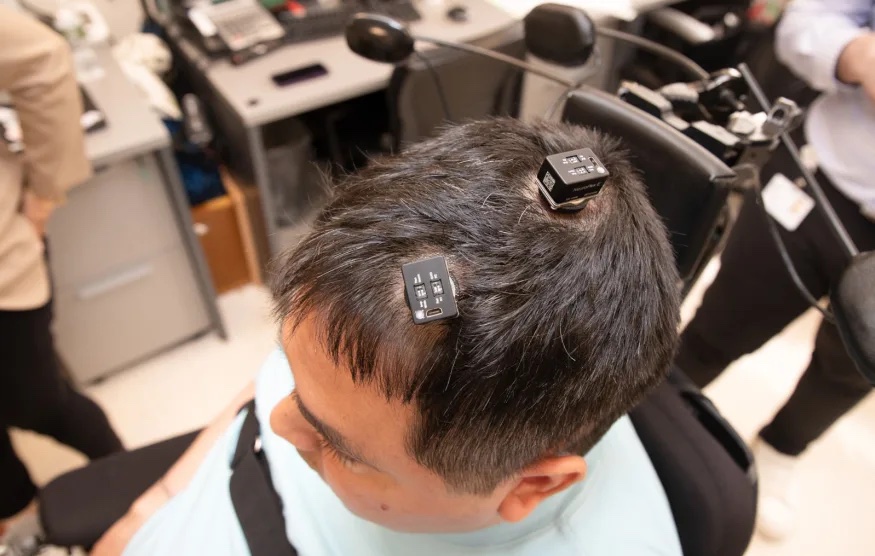
8-5 #PhD : Qualcomm invests in a new company developing RISC-V products; Nothing has announced a new brand, CMF by Nothing; India has restricted import of certain laptops and computers under HSN 8471 with immediate effect; etc.

Intel has allocated USD425M, or approximately 34%, of its inaugural USD1.25B green bond proceeds. As highlighted in its first green bond impact report, the proceeds, which support Intel’s investments in sustainable operations, have been allocated across five project categories: pollution prevention and control, water stewardship, energy efficiency, renewable energy, and circular economy and waste management. These investments support Intel’s long-term sustainability commitments, which include 100% renewable electricity across its global operations, net positive water and zero waste to landfills by 2030; net-zero GHG emissions across global operations by 2040; and net-zero upstream GHG emissions by 2050. (Neowin, Intel)

China’s imports of semiconductor manufacturing equipment from Japan increased more than 40% in Jun 2023 from a month earlier. In Jun 2023, imports of Japanese chip-making gear reached USD804M, up 41.6% from May despite being 10.5% down from the same period last year. Among the equipment with the highest value, imports of photolithography steppers for printing chip designs on wafers grew by 137.1% to USD62.4M, while the value of etching and stripping machines brought into Japan increased 370.1% to USD44.4M. The increase in imports comes as Japan’s new export control measures, which took effect from 23 Jul 2023, require domestic companies to apply for a licence to sell 23 types of chip-manufacturing technologies to a foreign country. The list includes equipment for cleaning, deposition, lithography and etching. (Gizmo China, SCMP, SFDKJ, 163.com)
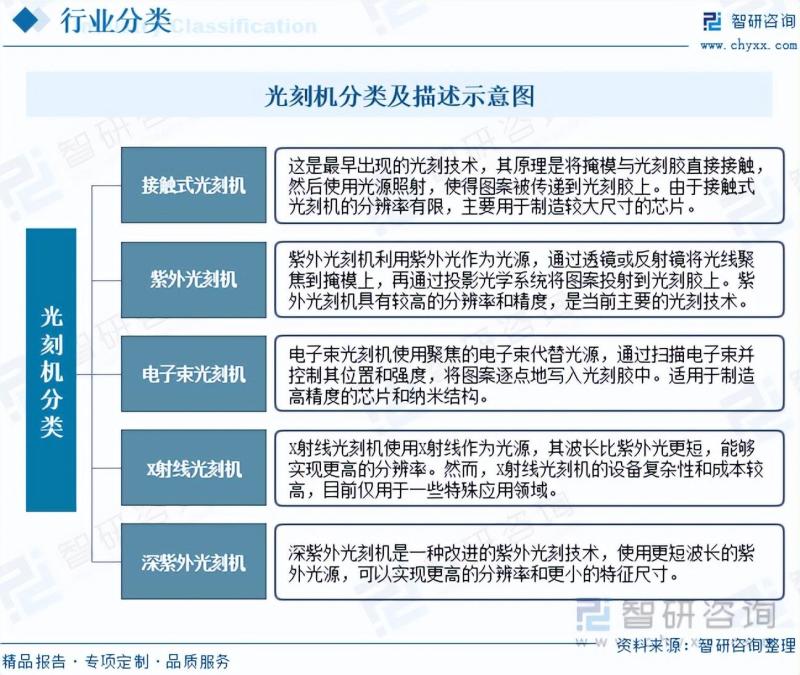
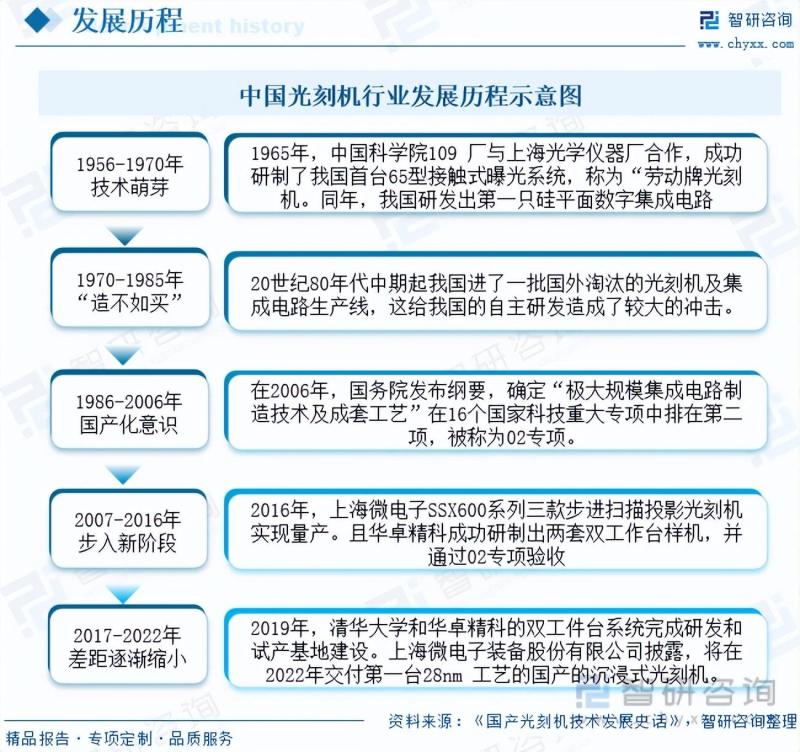
TSMC says that it will launch the 2nm process in 2025 as scheduled, and enter mass production in 2H25. 2nm can be described as a major node for TSMC. The process will use nanosheet transistors (Nanosheet) to replace FinFETs, which means that TSMC’s process has officially entered the GAA era. Samsung has also announced a specific timetable for 2nm mass production: the technology will be used first in mobile devicefrom 2025; it will be suitable for high-performance computing using backside power supply technology by 2026; and its use will be expanded to automotive chips in 2027 . Since announcing the implementation of the IDM2.0 strategy, Intel has spared no effort to attack in all directions, focusing on the goal of “five process nodes in four years”. Among them, Intel 20A and Intel 18A correspond to 2nm and 1.8nm processes respectively. Intel has high hopes for this and is aggressive. Intel announced that Intel 20A is planned to be put into use in 1H24, and the well-progressed Intel 18A will also enter mass production in advance of 2H24. Rapidus, which carries the revival plan of Japan’s foundry industry, is not to be outdone. It announced the latest production plan not long ago. It is expected to trial production of 2nm in 2025, using IBM’s 2nm GAA technology, with the goal of mass production in 2027. (Bnext, CN Beta, Business Korea, Gizmo China, Asia News Network, ExtremeTech)
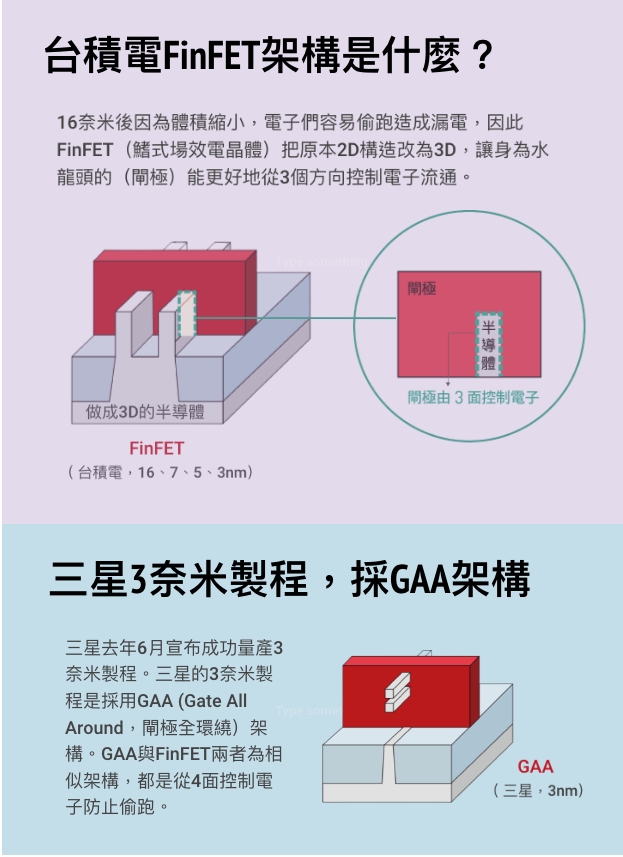
AMD said it sees an opportunity to develop an artificial intelligence (AI) chip specifically for the Chinese market to comply with U.S. export curbs, in a move that would follow rivals Nvidia and Intel. Lisa Su, CEO of AMD, said that China is an “important” market and that the semiconductor giant wants to be fully compliant with U.S. export controls. Accelerator chips are the kind of semiconductors required to train huge amounts of data for artificial intelligence applications. AMD is gearing up to increase production of its MI300 chip which it is positioning as a rival to Nvidia’s graphics processing units used for AI training. Nvidia dominates the market but AMD is hoping to challenge it with its latest chip.(CNBC, The Register, Reuters, Neowin)
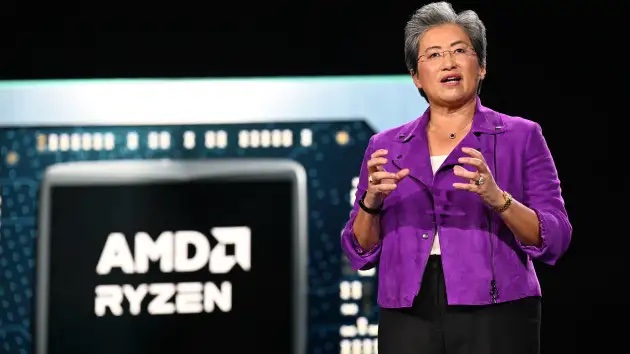
Qualcomm says says it is working with NXP Semiconductors, Infineon Technologies, Nordic Semiconductor, and Bosch to “jointly invest” in a new company that will be based on Germany. According to Qualcomm, the new company “will be a single source to enable compatible RISC-V based products, provide reference architectures, and help establish solutions widely used in the industry”. At launch the company will focus on solutions for the automotive industry, but eventually the goal is to develop products for IoT and mobile devices as well. In other words, Qualcomm, which makes the chips that power many of the best Android phones, may eventually transition (at least partially) to making RISC-V chips.(Liliputing, Qualcomm, ArsTechnica)

Tenstorrent, a Canadian startup developing artificial intelligence (AI) chips, has raised USD100M from Hyundai Motor and a Samsung investment fund, among others. Tenstorrent, which before this funding had already raised USD234.5M was valued at USD1B, is one of several upstarts looking to challenge Nvidia, the market leader in supplying chips to develop AI products like ChatGPT. Tenstorrent has raised USD30M from Hyundai and USD20M from Kia, with the remaining USD50M coming from Samsung’s Catalyst Fund and other investors. (TechCrunch, Reuters, PR Newswire)
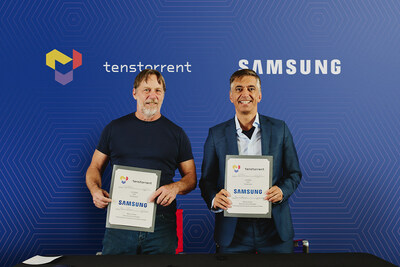

According to TF Securities analsyt Ming-chi Kuo, following two 2H23 Apple iPhone 15 standard models, two 2H24 iPhone 16 Pro models will also adopt stacked-designed CIS, so Sony’s high-end CIS capacity will continue to be tight in 2024, benefinting Will Semi to continue to obtain more orders for high-end CIS from Chinese smartphone brands (design- in & design-win). As Sony’s high-end CIS capacity remains tight, Will Semi’s high-end CIS (48MP+) market share will continue to grow rapidly. It is expected that 2H23 high-end CIS shipments will increase by about 50% HoH to 36M units, and shipments in 3Q23 and 4Q23 will be about 16M and 20M units, respectively. Benefiting from the significant increase in orders in 2H23, Will Semi’s high-end CIS shipments in 2023 will grow by about 35% YoY. (Neowin, Twitter, Medium)
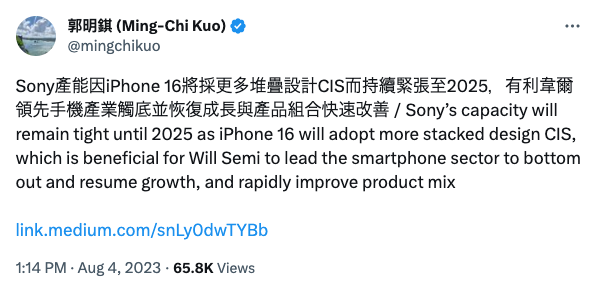

CEO of Nothing, Carl Pei, has announced a new brand, CMF by Nothing, which has been created to address the lack of interesting products in the “value section”. CMF by Nothing will launch a smartwatch and a set of earbuds “later 2023”. Pei states CMF by Nothing was made in response to its community wanting good quality devices at a lower cost. (Android Authority, Android Central, GSM Arena, TechCrunch)

Apple reportedly aims to manufacture 15M iPhone 15 units in India in 2023. Previously, India lagged one year behind China in new iPhone production, but in 2022, the gap shrunk to about a month. The aim in 2023 is to further trim this delay to less than 10 days. Historically, China has been responsible for 95% of iPhone production since the debut of the first model in 2007. Now, Apple is looking to shift at least 20% of iPhone 15 production to India, shifting away from the “Assembled in China” tag. Apple’s plans for India include not just assembly, but also the creation of intermediate components such as metal casings. In addition, the company wants to migrate some iPhone product development resources from China to India, indicating the potential development of new labs and the involvement of thousands of engineers. (CN Beta, Yahoo, Nikkei)
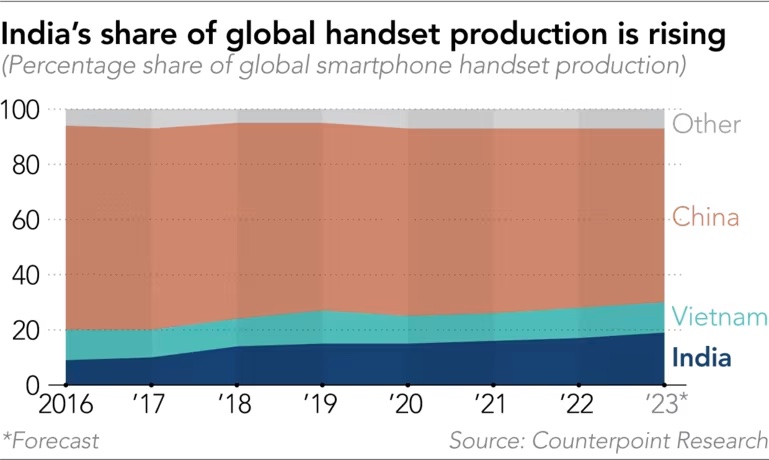
Samsung and uBreakiFix by Asurion, an authorized repair provider for Samsung smartphones since 2018, are expanding their efforts together to make quality and convenient in-person device care accessible to more people in the U.S. The expansion includes appointing 50 existing stores as flagship Samsung repair locations by end of 2023. These flagship locations will have access to specialized equipment, parts inventory and Samsung training, enabling them to quickly get customers’ devices back up and running, often in the same day.(Digital Trends, Android Central, Samsung)
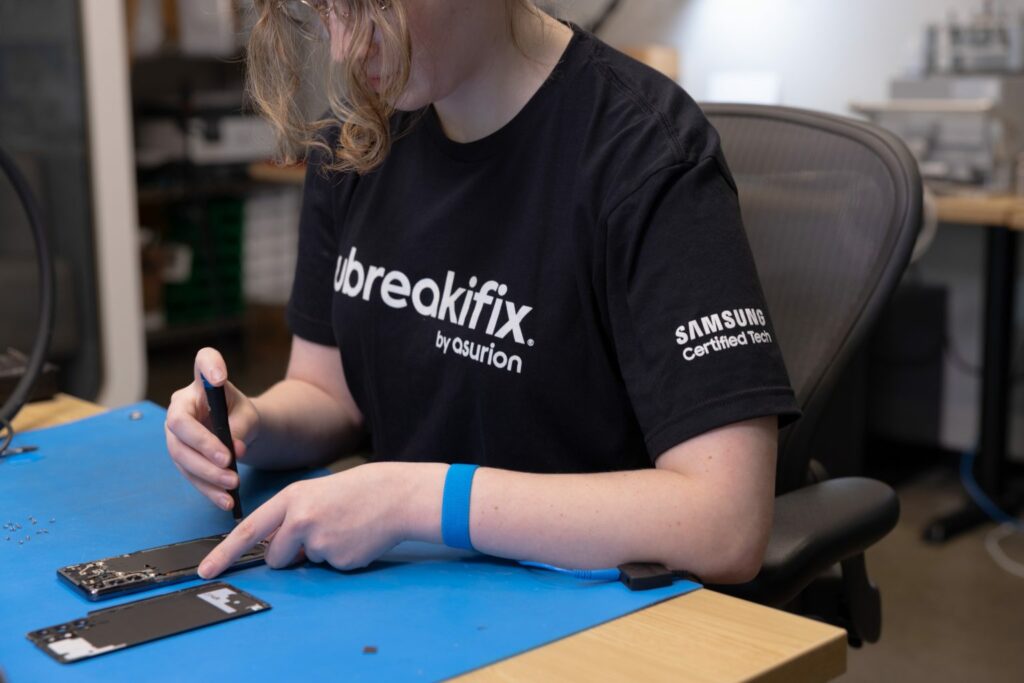
Huawei has announced HarmonyOS 4, which brings a major visual redesign complete with new personalization options for smartphones, tablets and smartwatches. The HarmonyOS ecosystem now powers over 700M devices worldwide across varying sectors ranging from smartphones to TVs and cars. Huawei is bringing the ability to change system fonts, colors, clock and widgets styles with multiple combinations and customization options. Huawei is also updating its emoji pack with animated options. The notification center also gets an overhaul with the option to divide incoming alerts based on user’s preference. Users can also pin their preferred app notifications and interact with them directly from the notification center without opening the app. Huawei is also adding more card (widgets) options from a wider selection of apps and utilities in with varying sizes that can be placed on the home screen.(GSM Arena, Huawei, CN Beta, CN Beta)
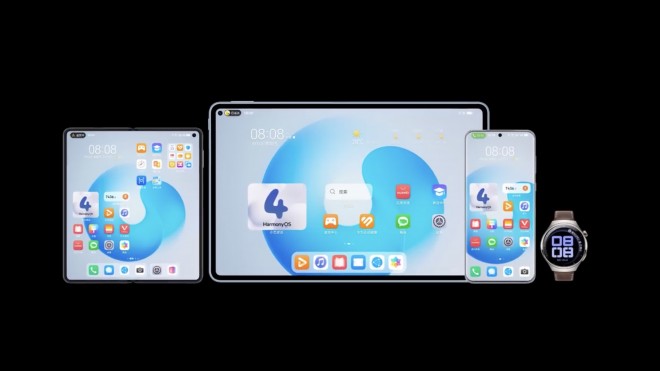

The Directorate General of Foreign Trade (DGFT) in India has restricted import of certain laptops and computers under HSN 8471 with immediate effect. The DGFT restricted import of laptops, tablets, all-in-one personal computers and ultra small form factor computers and servers. These electronics can be imported only against a valid license meant for restricted imports. This could hit hard the likes of Apple, Dell and Samsung and force them to boost local manufacturing. Current regulations in India allow companies to import laptops freely, but the new rule mandates a special licence for these products similar to restrictions India imposed in 2020 for inbound TV shipments. The latest DGFT notification is likely to push local manufacturing in the purview of “Aatmanirbhar India”. (Apple Insider, Reuters, TechCrunch, India Today, Mint, Mint, Economic Times)
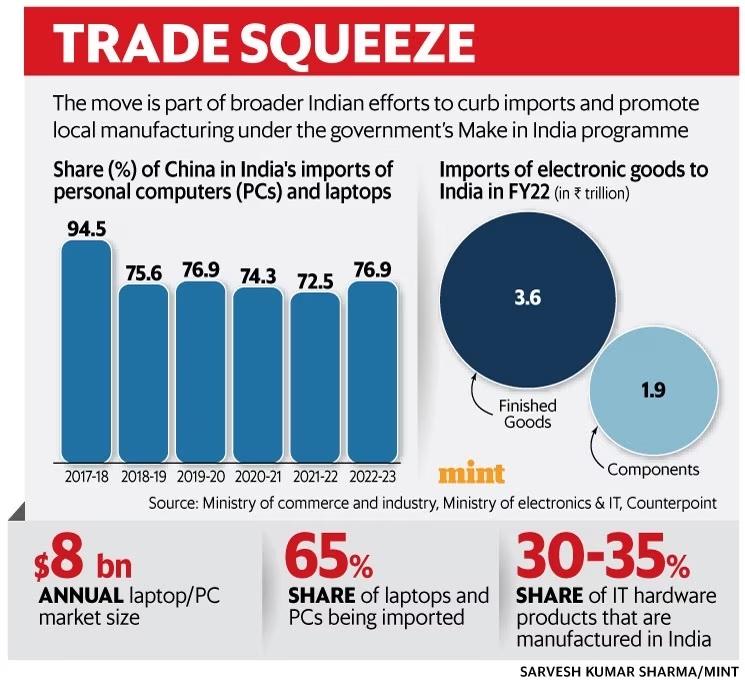
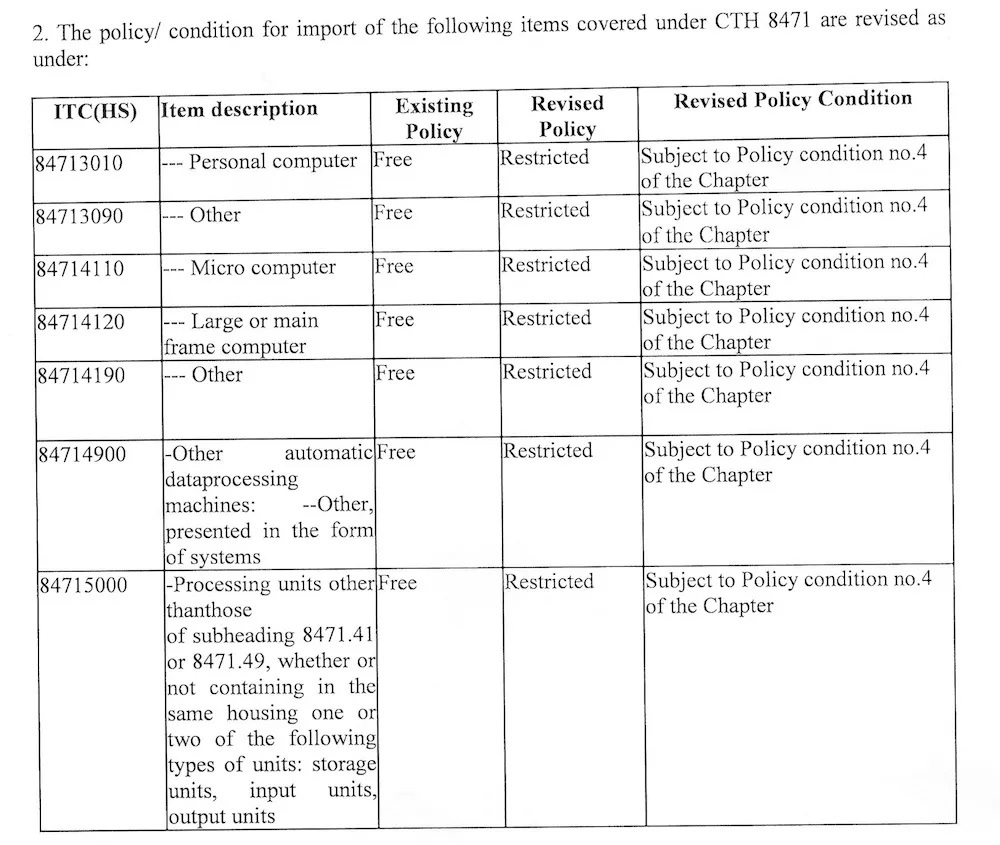

Waymo co-CEOs Tekedra Mawakana and Dmitri Dolgov shared their new vision and roadmap. They talk about the prospects of rapidly growing capabilities of AI, shifting focus to Waymo One, and partnership with Daimler Truck North America (DTNA). Waymo opened its driverless cab services in San Francisco less than a year ago, in November 2022, to areas in Daly City, Los Altos, Los Altos Hills, Mountain Views, Palo Alto, and Sunnyvale. It previously partnered with brands including Renault, Geely, Fiat Chrysler, and Lyft to bring more self-driving taxi cabs to more markets. Waymo One, its autonomous ride-hailing service, gained significant growth and rider demand in San Francisco, Pheonix and Los Angeles. Waymo says they are developing an AI-based, fully autonomous driver for its services, aptly named Waymo Driver. (Neowin, Waymo)
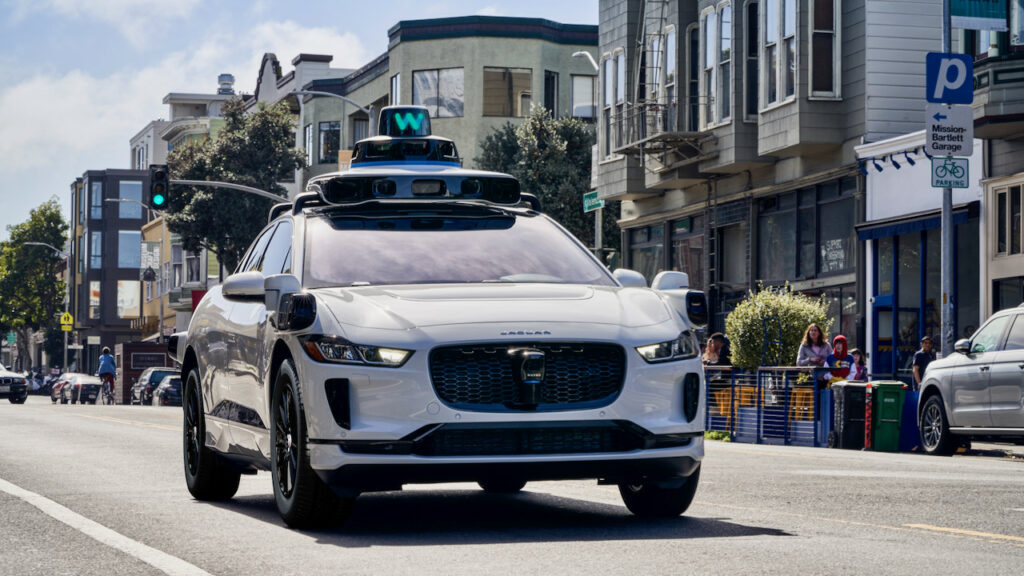
Great Wall Motor, China’s largest sport-utility vehicle (SUV) assembler, looks set to become the first carmaker to use Baidu’s ChatGPT-like artificial intelligence (AI) technology, which enables conversation between driver and car. The company, based in Baoding in northern China’s Hebei province, has said that it has partnered with Baidu, a search and AI giant, to develop vehicles fitted with the chatbot tool known as Ernie Bot, reinforcing a push to make cars more intelligent and user-friendly.(Gizmo China, SCMP, IT Home)
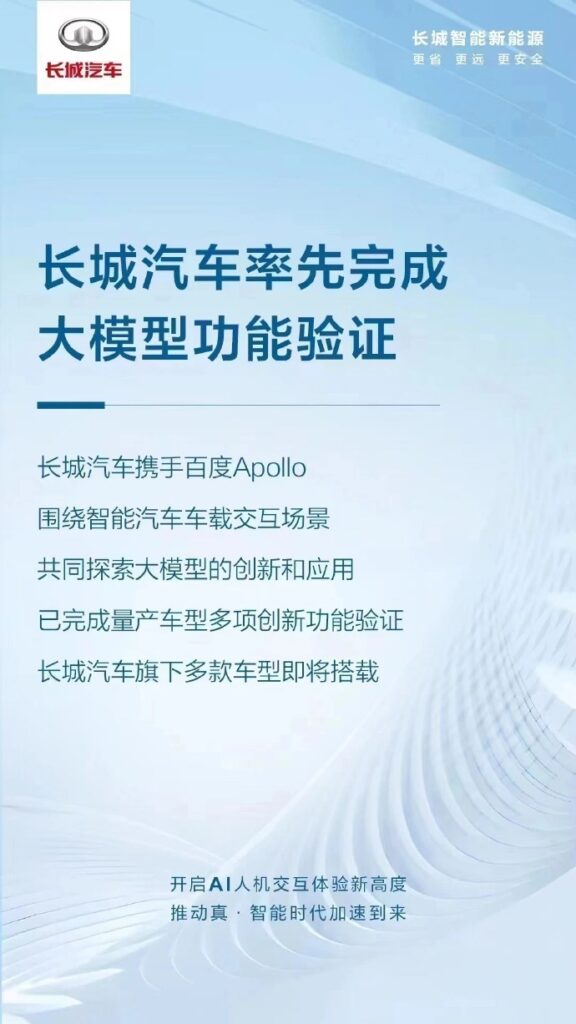
Waymo is pausing its efforts to develop autonomous truck technology to refocus on ridehailing services instead. The Alphabet-owned company announced that it will “push back” the timeline on its commercial and operational efforts for trucking and will also be scaling back development in the unit. A small number of employees were laid off as a result of the decision. Waymo’s trucking unit, also known as Waymo Via, sat alongside its Waymo One robotaxi division. Taken together, they represent the company’s efforts to commercialize its autonomous driving technology. Now the timeline and the future of its autonomous trucks are in question.(The Verge, Engadget, Waymo)

According to TF Securities analyst Ming-Chi Kuo, Huawei and Jianghuai Automobile Group Corp (JAC) are jointly developing the AITO MPV with a price tag of nearly CNY1M, which is expected to enter mass production in 2Q24, with a shipment target of about 50,000 units one year after launch. AITO MPV plays an important role in Huawei’s long-term automotive strategy. The position of AITO MPV in the automotive market is similar to the super high-end position of Huawei’s P/Mate series in the Android smartphone market, with the aim of satisfying the needs of high-end users, enhancing brand value and promoting technological innovation. (CN Beta, Sina, IT Home, Twitter, Medium)
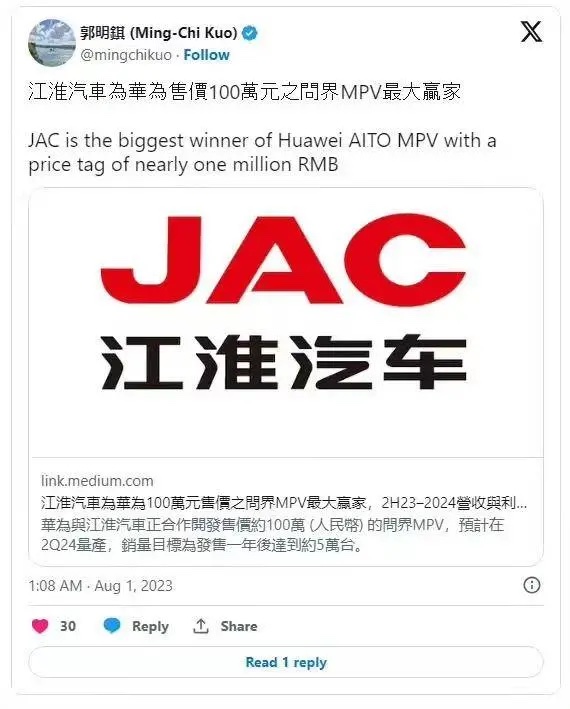

Apple’s CEO Tim Cook is touting the company’s investment in generative AI technology. Cook said that Apple has been “doing research across a wide range of AI technologies, including generative AI, for years”. Cook emphasized that Apple looks for ways to integrate AI technologies, including generative AI, into its products in a way that can “enrich people’s lives”. Apple is internally testing a generative AI chatbot with employees, oftentimes referred to as AppleGPT. (CNBC, Apple Insider, Reuters, 9to5Mac)

Amazon CEO Andy Jassy has revealed that “every single one” of Amazon’s businesses has “multiple generative AI initiatives going right now”. The company offers infrastructure and services via AWS that can help power many generative artificial intelligence applications. The AWS CodeWhisperer system, for instance, aims to speed up developers’ workflows by suggesting snippets of code they can use directly in the code editor.(Engadget, The Verge, Seeking Alpha, Business Insider)

SoftBank has announced that it has launched a new company to research and develop homegrown Large Language Models (LLM) for the Japanese market. Named SB Intuitions Corp., the new company will also develop, market and provide generative AI services in the Japanese language. To achieve its goal of building homegrown generative AI capabilities within Japan, SoftBank is allocating around JPY20B (more than USD140M) into its generative AI computing platform, slated to launch in the fall of 2023. This platform, which will use NVIDIA’s DGX SuperPOD AI data center infrastructure, was also approved by Japan’s Ministry of Economy, Trade and Industry (METI) and is set to receive subsidies totaling JPY5.3B (~USD37.1M). SoftBank President & CEO Junichi Miyakawa has further highlighted a strategic partnership with Microsoft aimed at delivering solutions rooted in Microsoft 365, Microsoft Azure, and Microsoft 365 Copilot, which leverages OpenAI’s GPT-4, to enterprise customers.(My Drivers, Metaverse Post, Softbank, IT Home)
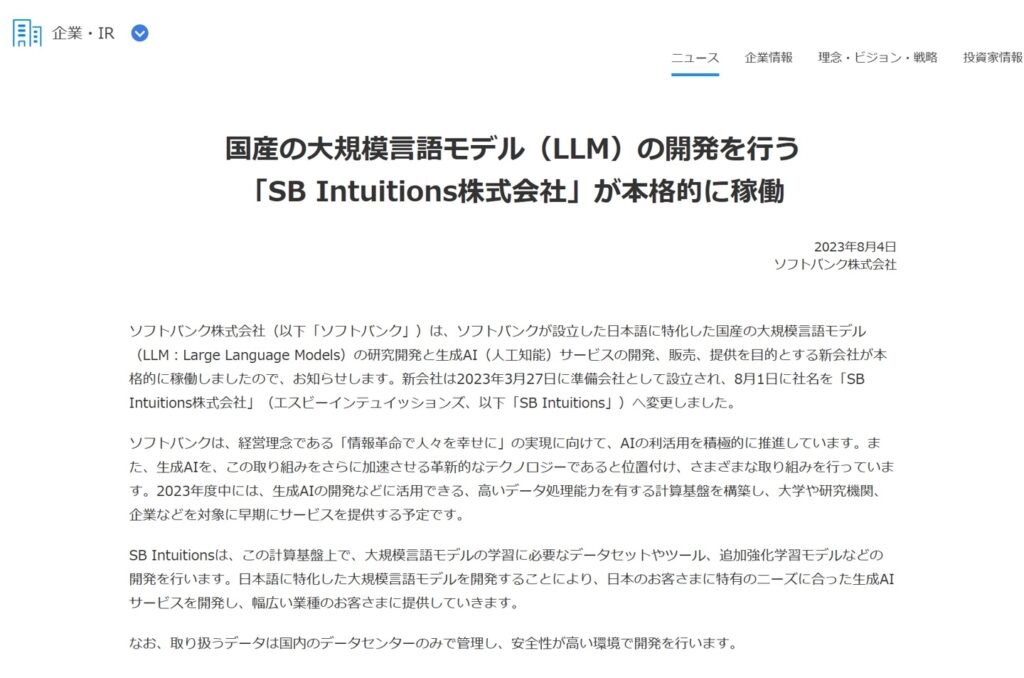
Northwell Health’s Feinstein Institutes for Medical Research has successfully implanted microchips into the brain of a man living with paralysis and have developed artificial intelligence (AI) algorithms to re-link his brain to his body and spinal cord. This double neural bypass forms an electronic bridge that allows information to flow once again between the man’s paralyzed body and brain to restore movement and sensations in his hand, and lasting gains in his arm and wrist outside of the laboratory. While the microchips are inside his body, the team also installed external ports on top of his head. Those ports connect to a computer with the AI algorithms that the team developed to interpret his thoughts and turn them into action. The researchers call this approach “thought-driven therapy”, because it all starts with the patient’s intentions. (Engadget, Northwell University)
